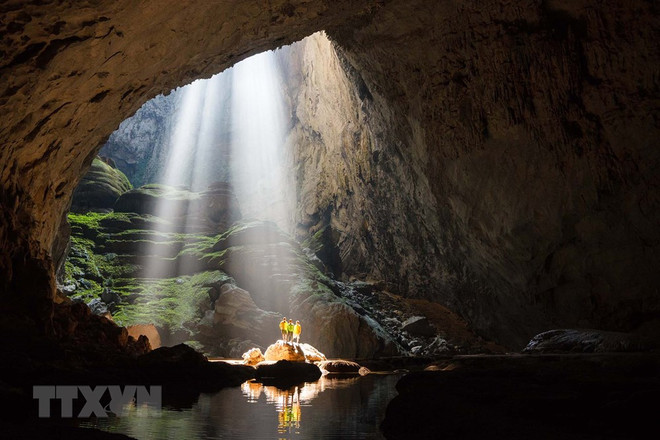Hanoi (VNA) – Stone formations with stalagmites and stalactites,underground rivers and lakes, together with delicate flora and fauna have mademammoth Son Doong Cave in the central province of Quang Binh one of the world’smost captivating destinations.
Located in the heart of the Phong Nha-Ke Bang National Park, the cave, which ismore than 200 metres in width, 150 metres in height and approximately 6.8kilometres in length, was explored by the British Cave Research Associationduring 2009-2010 and it has been open to the public since 2013. It is believedto have been formed 2-5 million years ago.
Son Doong Cave has been recognised as the largest of its kind in the world bythree international record-keeping organisations – Guinness, the AssociationWorld, and WorldKings.
Recently it has been ranked third among the worldwide bucket-list trips for2019 by Lonely Planet, a prestigious travel guide magazine.
The cave attracted 243 tourist arrivals from 34 countries and territoriesacross the world who joined 32 pilot tours “Conquering Son Doong-the world’slargest cave” operated by the Phong Nha-Ke Bang National Park management boardand Oxalis Adventure Tours in 2013. It generated over 15 billion VND (645,600 USD)for local tourism in the eight-month trial period.
The tours created stable jobs for 40locals, with average income of 6 million VND (258 USD) per month at that time. Takingthe cue from the adventure tours, local tourism services have been developed aswell.
Besides, the Son Doong tours have helpedpopularise the UNESCO-certified Phong Nha-Ke Bang National Park as well as theprovince’s tourism to the world.
Holding important scientific values, in terms of geology, geomorphology andancient climate, the cave has been favoured by many scientists and sciencechannels worldwide.
The eco-system inside Son Doongis as unique as it is large, and it even has its own localized weather system.Rare limestone cave pearls are scattered in dried pools, and the largeststalagmite ever found stands 80 meters tall.
Collapsed ceilings have created openings known as dolines,allowing foliage plants to grow inside the cave. Microscopic organisms thrivein the darkness.
According to an initial study from the Vietnam Academy of Science andTechnology, besides 161 species of flora found inside Son Doong, the cave ishome to 300-million-year-old coral fossils which are valuable for the analysisof geological layer changes through times.-VNA






























